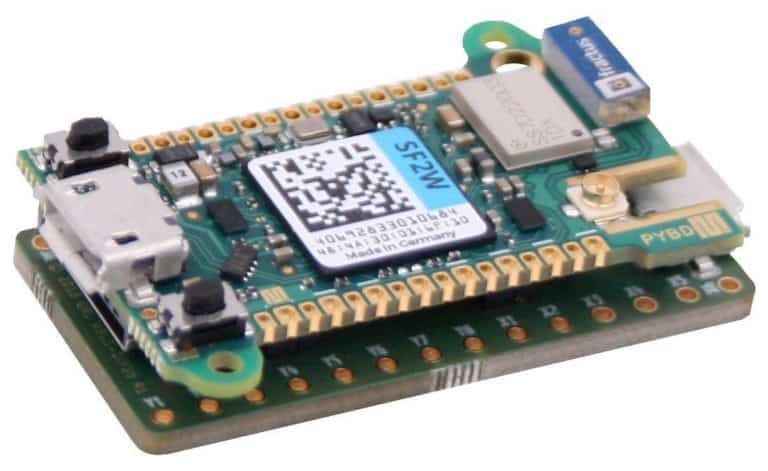Today the new Pyboard D-series for MicroPython robots has been made available. The microcontroller is sold for 56 dollars (49.70 euros) and offers developers a device that requires very little power to run programs.
These are programs built with MicroPython, a stripped-down version of the hugely popular Python 3 programming language. The main function of Pyboard is that it runs on bare metal. This makes Python a control system for ongoing electronic projects on devices with 16KB of working memory.
Kickstarter Campaign
The software and hardware was created by programmer Damian George. He successfully launched a Kickstarter campaign to bring microcontrollers to life in the course of 2014. These were – and are – suitable for small robots that use little energy and can squeak, have flashing lights and detect objects.
The Pyboard microcontrollers are made for developers who know Python. This is the third most popular programming language after Java and JavaScript, but is rapidly gaining support. For example, while the Raspberry Pi Zero W runs on Linux, the Pyboard as a whole relies on MicroPython.
The new D-series was unveiled during the FOSSDEM open source conference in Europe. At the time, no price had yet been announced, but – now that the device has actually been placed on the market – it is now known. Specifications are finally there.
Specifications Pyboard D
The Pyboard D runs on a STM32F7 Cortex-M7 and has 512KB of working memory and 2MB of flash memory. The Pyboard D features built-in wifi, Bluetooth, a connector for a 2.4 GHz antenna, a micro-USB input and an LED light that can give red, green, blue and white lights.
The Pyboard D also features a number of GPIO expansion options, including a 16-pin header, a 32-pin header and two 40-pin WBUSA headers. This allows other development boards, sensors and storage options to be added. MicroPython itself offers an LCD skin and an audio chin. This allows sound to be detected and recorded.
Finally, the Pyboard D offers several options to control its behaviour. There is a Python REPL-prompt, for example, after you have connected the device to a PC via USB. Remote scripting and a built-in file system are also available.
This news article was automatically translated from Dutch to give Techzine.eu a head start. All news articles after September 1, 2019 are written in native English and NOT translated. All our background stories are written in native English as well. For more information read our launch article.